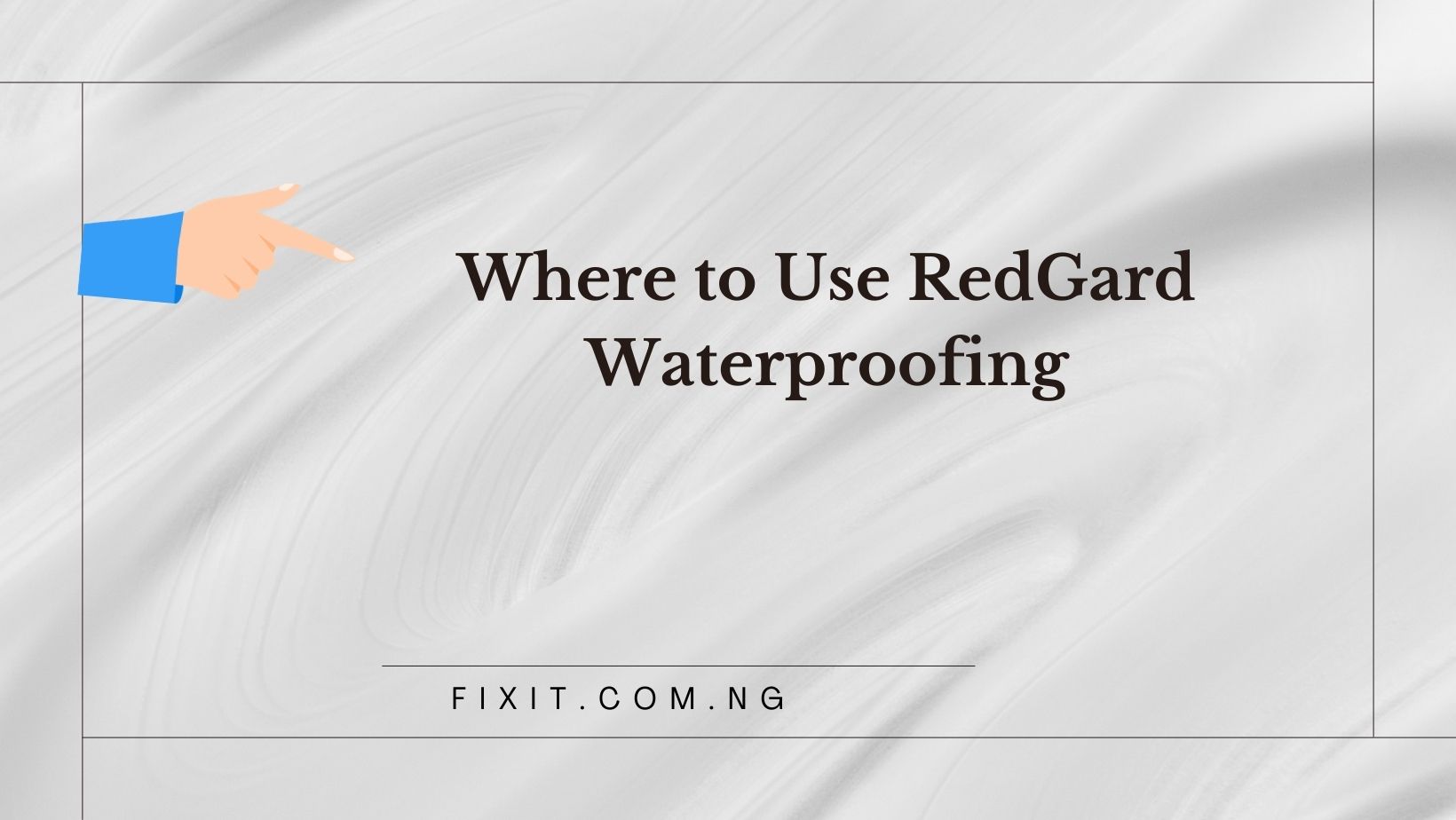RedGard waterproofing is an easy and quick solution for commercial and residential flooring applications that provides crack prevention in one simple step. By creating a seamless waterproof barrier against substrate movement up to 1/8 inch, this product also acts as a moisture barrier beneath all types of floor coverings and acts as a moisture shield beneath.
Synthetic polymers, portland cement and finely ground silica sand make up its constituent parts, with this material typically being applied via pump or roller/trowel to ensure optimal coverage and saturation.
Showers
RedGard can provide an effective waterproof membrane that protects surfaces from cracking and deterioration when installing or renovating existing shower pans, such as cracking tiles. Applying it quickly and easily – simply clean, prepare (similar to mudding drywall) and then apply. Let it dry for several hours after that before conducting a water test to verify its waterproof qualities before beginning tile work.
The waterproofing and crack-prevention membrane quickly dries to form a flexible, strong and durable surface that can be tiled over within hours of application. Easy application by roller, brush or spray can make this membrane suitable for various surfaces such as cement boards, gypsum board, drywall panels or plywood and also provides moisture barriers beneath ceramic and stone tiles for flooring surfaces.
RedGard’s components consist of synthetic polymers, portland cement, finely ground silica sand and other proprietary additives. Polymers provide flexibility and durability, while cement binds them together into an effective material capable of withstanding substrate movements while being flexible enough for movement of its substrate. Before applying RedGard it’s important to read through manufacturer instructions carefully to ensure structurally sound surfaces free from cracks or stains are achieved.
Tub Surrounds
Redgard waterproofing membrane can be applied to walls and floors to form a protective barrier against moisture penetration, creating a protective barrier from moisture damage and mold growth. As a liquid-applied membrane that can be easily applied by rolling or brushing onto surfaces, Redgard offers residential and commercial uses and protects surfaces from moisture damage while also helping tile installations avoid cracking over time.
Installing a tub surround requires taking several steps in order to prepare it for tiling. First, any existing drywall or greenboard must be removed, and cement backerboard hung directly on studs using screws. Next, fiberglass tape must be used on seams before adding thinset mortar over it all for proper adhesion.
Step Two will require priming the area with one part water to four parts Redgard concrete sealer or redgard primer; once this has dried, you can begin installing your tub surround.
Once it has dried for several hours, return and apply another layer of Redgard. Allow at least 24 hours for it to fully cure before continuing on your installation project and setting up the shower valve and installing any plumbing necessary for its completion.
Floors
Redgard membrane can be used in floors to waterproof them. It can be easily applied with either a roller or brush and is ideal for use with tile, natural stone and other flooring materials such as carpet. Redgard provides a cost-effective solution for installations in moisture-prone areas that helps prevent crack transmissions in tile and stone flooring systems while its flexible yet tenacious and durable barrier accommodating building movements is a cost-saving measure that’s cost effective compared to alternatives.
Waterproofing your floors is vital in order to prevent water damage and mold/mildew growth, as well as to stop warping/rotting that could cause structural damage to your home. Furthermore, waterproofing your floors can increase their value and add beauty and value to your home overall.
Before applying Redgard, make sure that the surface is free from dirt and debris. Remove any loose materials with a damp mop or rough grit sandpaper; fill any holes or cracks before beginning application; follow manufacturer’s instructions for dosage and application process to ensure maximum effectiveness of results.
Apply the product at its recommended thickness, which can be verified using a paint gauge. Allow it to dry for 24 hours before installing tile or flooring over it.
Basements
Basements are commonly found in residential buildings and may be utilized for storage, utility rooms, recreation rooms or bedrooms. They are often dug into the ground with concrete flooring for durability; access can usually be gained either directly from above ground or via an exterior stairwell leading up from within the building.
Redgard waterproofing membrane is an excellent solution for basement waterproofing. By creating a barrier between the foundation and soil below it, it protects from moisture penetration and mold growth while also preventing cracks or leaks forming in cracks or crevices in walls or floors below them. Easy application via rolling, brushing or spray-on application methods allows it to fit seamlessly with many surfaces such as cement board or drywall walls and surfaces.
Redgard must be installed according to its instructions precisely for optimal results. As it contains hazardous chemicals, it’s crucial that when handling Redgard, a mask and ventilation are worn when working around it. Redgard can take several hours to set, producing toxic fumes in that time. Once fully set, however, tiling over can take place without needing a vapor barrier; during installation it is vital that all areas with potential leakage be covered with membrane. Drain flanges are metallic collars that seal around drain tubes to the floor and ensure no water can seep into your home through screw holes or seams. In addition, it is crucial that all screw holes and seams be covered with Redgard to ensure no moisture enters through these openings.

